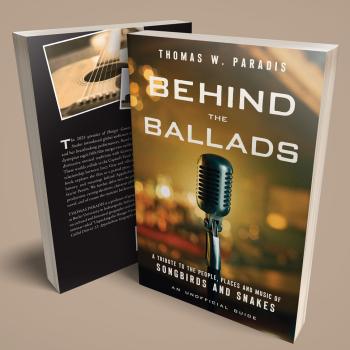The recent ARAM conference on the Mandaeans in Oxford was a delightful cornucopia of different perspectives and scholarly angles on the Mandaeans, from questions about the origins to their present-day situation, with a number of Mandaeans in attendance as well as scholars interested in their religious tradition, heritage and language.
Mandaism is, I’m quite sure, fascinating to everyone who hears about it. An ancient Gnostic group surviving to the present day, whose texts are written in a dialect of Aramaic – can anyone fail to find them interesting? But there are also a lot of hurdles and challenges, not to mention a number of unanswered questions. I thus thought it would be useful to list some of the major sources in the study of the Mandaeans and their traditions in antiquity, as well as some of the major scholarly needs and puzzles relating to them.
(1) The major texts
The two major religious texts of the Mandaeans are the Ginza Rba (Great Treasure) and the Sidra d-Yahya (Book of John), neither of which exists in a complete English translation. The German translations by Lidzbarski, on the other hand, can be found on Archive.org.
Major need: Someone please translate these into English. Imagine what the situation would be like if there were no English translation of the Nag Hammadi texts, or the Dead Sea Scrolls. Of course, scholars working specifically on them will work on them in the original languages. But many scholars in other fields (such as New Testament, for instance) may well never have studied Coptic, and yet might benefit from reading or consulting them in translation. And even those who know the relevant languages would find it easier to skim in their native tongue when looking for a particular passage. In addition to the scholarly benefit, having English translations would benefit those Mandaeans living in English-speaking countries, who currently cannot read their own Scriptures.
(2) Worship materials and explanations
I am grouping together here two very different sorts of works. On the one hand, there is an English translation of the Canonical Prayerbook, which contains the ‘hymns’ used in various liturgies. On the other hand, there have also been translations made of what are often called “esoteric priestly commentaries” which explain and interpret the Mandaean rituals.
Major need: My own conference paper focused attention on the Miriai story in the Book of John in conjunction with passages in priestly sources (the Thousand and Twelve Questions and the Scroll of Exalted Kingship) which provide clues about the historical connection between Mandaeism and Judaism.
(3) Unpublished and unknown texts
There are texts which are known to exist but which are not in any library’s collection of Mandaean texts, such as Dmuth Kusta, which I’ve heard is also beautifully illustrated. There are also texts which have never been shared with anyone outside of the Mandaean priesthood, and there may even be texts the existence of which is still unknown to scholars.
Major need: Copy, transcribe, acquire if possible, publish, photograph, and in any and all ways make available these texts for scholarly study. Imagine what our understanding of early Christianity would be like if some of the New Testament books were still unknown to scholars, only to be found in the private collection of priests. Who knows what is still waiting to be discovered?
(4) Mandaic magical bowls
These have been collected and studied for many years, and are of great interest, in particular when found in archaeological contexts that can be documented. Those found at Nippur, for instance, show that bowls in Mandaic and Aramaic scripts could be found in homes around the same courtyard (as Erica Hunter explained in her conference paper at the ARAM conference).
Major need: Personally, I think an investigation is needed of whether the language of the bowls is the same dialect written in two different scripts, or whether the creators of Aramaic and Mandaic bowls would have seen themselves as speakers of different languages or dialects. The Mandaic script is itself mysterious – there are no instances of its usage for anything other than magical bowls and amulets on the one hand and sacred texts on the other.
(5) Haran Gawaita
Deserving mention on its own, this short and fragmentary text is among the most fascinating texts because of its apparent allusion to a Mandaean migration and because of its reference to a King Ardban or Artapanus.
Major need: Figure out which Ardban is referred to, and whether anything in this work can be confidently corellated with other historical information. Particularly worthy of being explored further is Jorunn Buckley’s suggestion (which I made independently here!) that “inner Haran” could perhaps be Wadi Hauran, which would provide a natural link between the Jordan Valley and the historic homeland of the Mandaeans in Mesopotamia in later centuries.
(6) Mentions by others
The non-Mandaean sources which either may or certainly do mention the Mandaeans need further investigation. Among Christian sources important ones include Epiphanius (who refers to a pre-Christian Jewish sect of Nasaraeans) and Theodore bar Koni (the earliest to quote the Ginza, he appears to be reproducing material from an earlier source at this point). There are also many medieval authors writing in Arabic whose mentions of the Mandaeans (or Sabians) are insufficiently known.
Major need: Particularly intriguing are the references in the Qur’an to Sabians (i.e. baptizers), and the mention of Muhammad being accused of being a Sabian. Does this tell us anything about the presence of Mandaeans in Arabia – or rather, about the composition and compilation of the Qur’an in an area where the Mandaeans were known?
If there is one thing that makes working in the field of Mandaean scholarship particularly rewarding, it is that there is so much to be done, that one does not need to fight to find some tiny area in which one can make a contribution. Hopefully the recent surge of interest will continue and spread!
In addition to archive.org, a Gnostic church has made some serious academic translations and discussions of Mandaean sources in English available online. This is greatly appreciated. Although the Mandaeans are the only Gnostic group existing from antiquity with continuity, it is great that current wider interest in Gnosticism is translating (if you’ll excuse the pun) into genuine interest in the Mandaeans, their history, their writings and their current situation.












